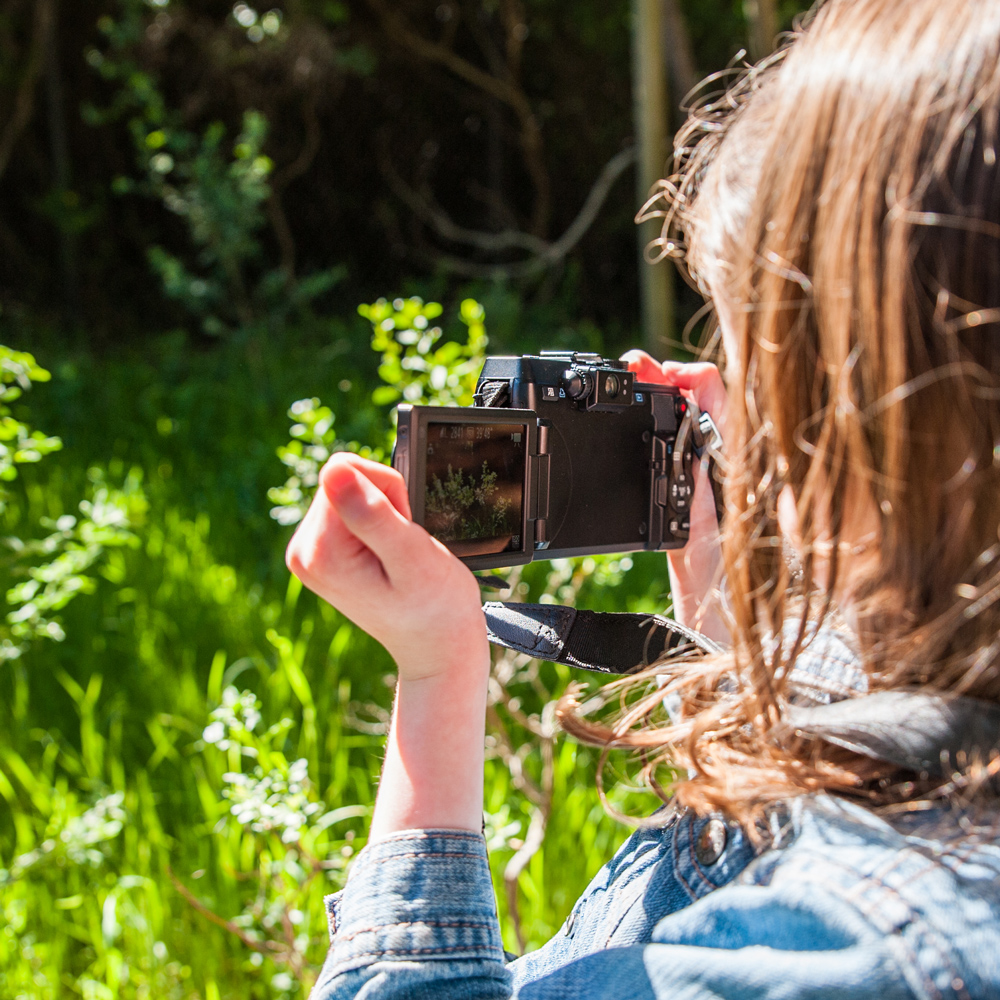Children use a camera for a non-traditional scavenger hunt. This activity can be done solo or in a group.
Materials Required
- Cell phone with a camera (or digital camera)
- Bag to gather trash
- Paper (optional)
- Something to write with (optional)
- If playing with teams, each team will need the above items
Instructions
1. Make a list of items nearby that can be photographed, or use the list below. In addition to easier items like a pinecone or a friend, include harder-to-find objects such as a video of flowing water. It is also fun to include categories like “things that grow out of the ground” or items that require something interactive like “a video of kids playing a game.” Each person must also pick up any trash they find and put it in their bag to throw away later.
Photos:
- Bugs
- A big tree
- A rock with spots or speckles
- A hole in the ground
- A neighbor
- Someone’s pet
- Pretty flowers
- Something blue
- Something growing out of the ground
- Something that starts with “L”
- Something that makes you smile
- Something big next to something small
- Something your best friend would like
Videos:
- Flowing water
- Branches blowing in the wind
- Someone exercising
- Kids playing a game
- An animal
- Someone making a funny face
- Something you’ve never seen before
- Something close up
- Something that looks fun
- Something making a sound
- Something in the shade next to something in the sun
- Someone on your team doing a good deed for the community
2. Write down the list or type it into the phone’s Notes function.
3. Decide on a time limit and set a timer. The longer the list, the longer the time limit should be.
4. Start the scavenger hunt! When you find an item, take a video or photo of it (depending on the instructions).
5. Find all of the items on the list before time runs out. If you split into groups, the team that finds the most items from the list wins. In the event of a tie, the team with the most trash collected wins.
Additional Tips
Try these add-on activities:
- At the end of the scavenger hunt, make a photo collage. Try grouping the items by their similarities. For example, group everything that is natural or everything that is man-made.
- Try this scavenger hunt in a forest, shopping mall, or downtown.
- Make the scavenger hunt about a specific theme—fashion, cars, mushrooms, etc.


